New construction, renovation or refurbishment of houses, apartments or outdoor spaces, all of these projects face unique challenges. Vibratory subfloors or existing floor constructions will be encountered by renovators and refurbishers and require attention in planning. An almost free choice in terms of format and appearance will attract the attention of newly built owners of houses or apartments and arouse desires. Building and living without barriers, especially in bathroom design, is increasingly becoming a fundamental planning factor. With this guide to ceramics, Princess Ceramic provides building owners with facts and information worth knowing, providing explanations and offering excellent ceramic solutions for all challenges. Because only those who have a sound overview can make decisions that guarantee pleasure in the finished project. Your Princess Ceramic - your project - your home
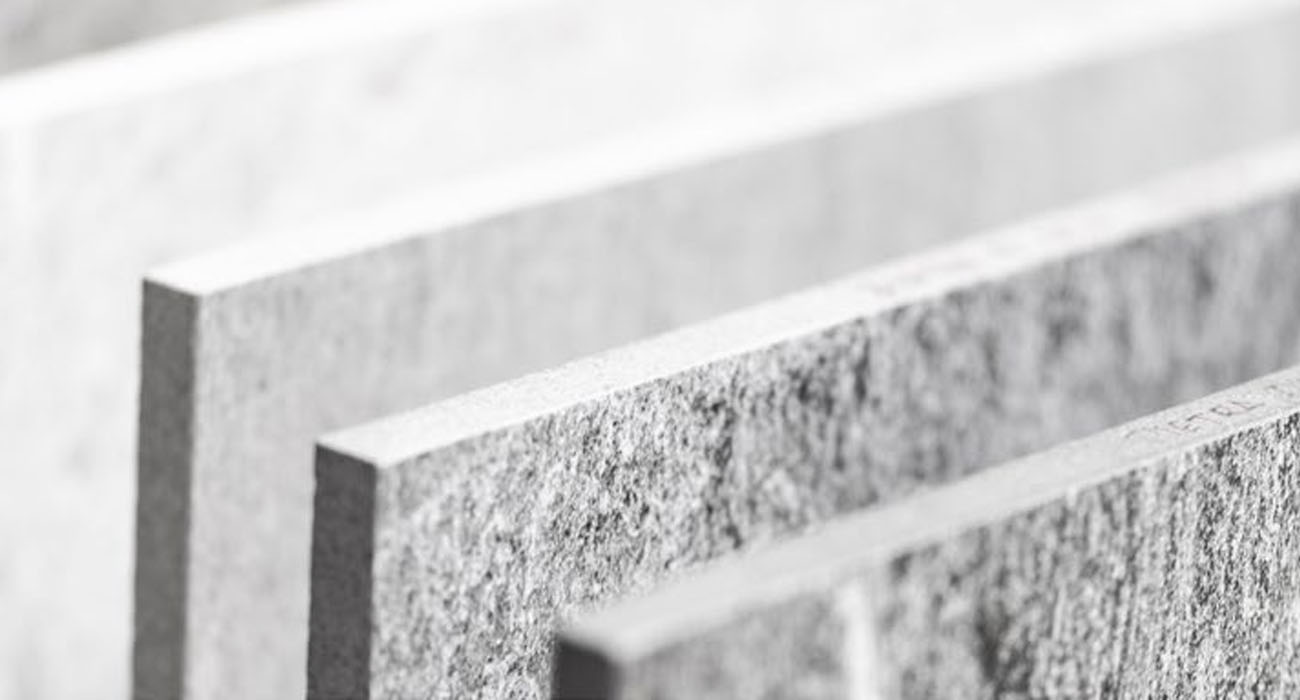
Ceramics (building ceramics)
Generic term for building materials that are produced and fired only from natural, ceramic raw materials such as clay, quartz, feldspar and mica. Once the firing process is complete, the ceramic no longer contains any organic compounds. Ceramics are absolutely free of emissions and pollutants. In the field of tiles, a distinction is made between earthenware, stoneware and porcelain stoneware tiles. The main difference between these materials is the water absorption rate and the associated product properties. For comparison - glass has a water absorption of E < 0.2%.
Earthenware
Earthenware tiles are ceramic tiles that are offered with a glazed surface due to their higher water absorption (E > 10%). A distinction is made between matt and glossy tiles. In Europe, these are used exclusively for laying in frost-free interior areas as wall tiles. Good cutting properties and a moderate weight are among the advantages of this type of tile.
Stoneware
Stoneware tiles are tiles with low water absorption (0.5% < E ≤ 3%), which are suitable for use on floors and walls indoors and, if frost-resistant, also outdoors. The tiles are available glazed (GL) or unglazed (UGL).
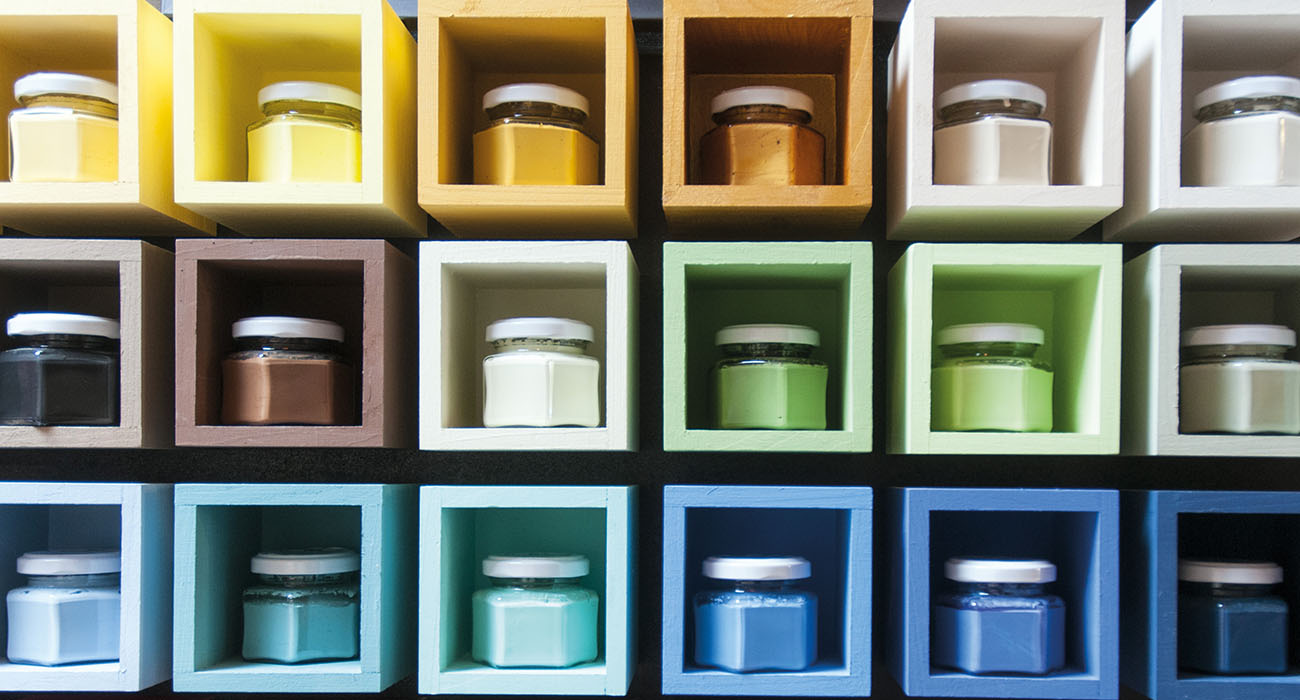
Porcelain stoneware
Porcelain stoneware tiles are tiles with low water absorption (E < 0.5 %) and high strength. Analogous to stoneware, they can be used as floor or wall covering. A distinction is made between glazed and unglazed porcelain stoneware. Glazed porcelain stoneware tiles offer cleaning advantages due to the closed pores, especially with regard to stain resistance. Unglazed porcelain stoneware tiles have a wear resistance that is among the highest of all floor coverings. Even after decades of intensive use, wear and tear of this homogeneous material is hardly noticeable. Unglazed porcelain stoneware can be given an semi polished (some areas matt, some glossy) or polished look by machine grinding. With this change in surface texture, impregnation is recommended. Porcelain stoneware is also particularly suitable for outdoor use due to its frost resistance. You can find more outdoor tiles in the Princess Ceramic outdoor catalogue.
Glaze
Glaze is a thin, glass-like surface coating on which to bake. Different surface patterns are possible by adding various colored and metallic pigments and other substances. The hardness and thickness of the enamel affect the sensitivity of the surface. Tiles placed on the floor are subject to abrasion as a result of foot traffic or driving in, which in the case of glazed tiles is called abrasion, and in the case of unglazed materials - deep abrasion. As the surface resistance to abrasion is not the same for all glazes, glazed and porcelain stoneware tiles are divided into five groups of different elasticity (abrasion groups) and marked accordingly.

Abrasion (groups)
Abrasion or surface wear occurs on floor coverings as a result of abrasive and rubbing stresses and can become visible on glazed tiles through changes in gloss and / or surface scratches. For this reason, the wear group (abrasion group) is indicated for glazed tiles. This corresponds to its surface hardness and depends on wear, the so-called abrasion. It should be noted that there are no legal requirements for private areas regarding the need for an abrasion group and that, in principle, tiles of any abrasion group can be laid.
Abrasion group I: Very light wear
Floor coverings in rooms that are walked on with low frequency of use without scratching soiling with soft-soled shoes, e.g. bedrooms and little-used guest toilets.
Abrasion group II: light use
Floor coverings in rooms that are exposed to normal footwear with a low frequency of foot traffic and less scratchy soiling, e.g. living rooms.
Abrasion group III: medium use
Floor coverings in rooms that are exposed to normal footwear with average foot traffic and scratchy soiling, e.g. bathrooms.
Abrasion group IV: Heavy duty
Floor coverings in rooms that are heavily used with normal footwear in terms of pollution and load capacity, e.g. entrance areas, terraces, kitchens.
Abrasion group V: Heavy use
For areas of application with very high public traffic, tiles of abrasion group V are available, which have a very high wear resistance, e.g. hairdressers, bakeries, snack bars, entrance halls for hotels, banks and restaurants.
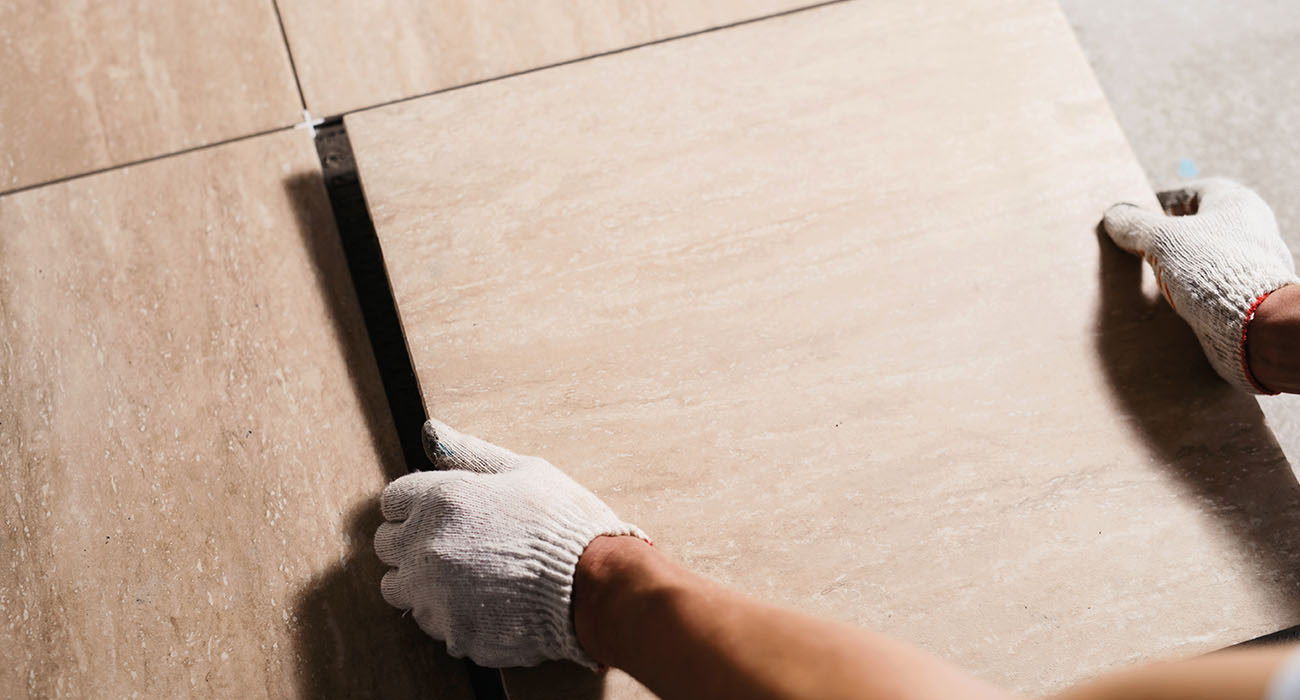
Calibre/Calibrated tiles
Calibrated tiles are tiles that have the same actual size. Usually, after production, the tiles are sorted into the different calibres and marked accordingly on the box.
Rectified tiles
Rectified tiles are particularly true to size because they are ground to a certain dimension at the edges after production. This gives the sides a 90° angle to the surface. For this reason, rectified tiles can be laid with very narrow joints. A particularly beautiful, almost jointless look is created.
Tile dimensions
A distinction is made between the actual manufacturing size, e.g. 297 x 597 mm, and the nominal size, e.g. 30 x 60 cm, which includes the joint width.
Slip resistance/slip-resistant tiles
Tiles have to be slip-resistant if they have a surface with varying degrees of profiling, fine roughness or roughness to prevent accidents. In the case of small-format tiles, the high proportion of joints has a positive effect on the degree of slip resistance, e.g. in the case of mosaics. According to the EC Construction Products Directive, floor coverings must be safe for use. Accident insurers prescribe slip-resistant tiles for floors in workrooms and areas with increased risk of slipping and for barefoot areas in commercial areas. The tiles to be used in these areas must have the respective prescribed degree of slip resistance. In commercial areas, a distinction is made between R9 and R13. In areas that are used barefoot (changing rooms, showers, swimming pools), a distinction is made between barefoot areas A, B or C. Ceramic floor coverings in private areas are not subject to any regulated requirements with regard to slip resistance. Irrespective of this, it is advisable to choose slip-resistant tiles according to personal safety needs.
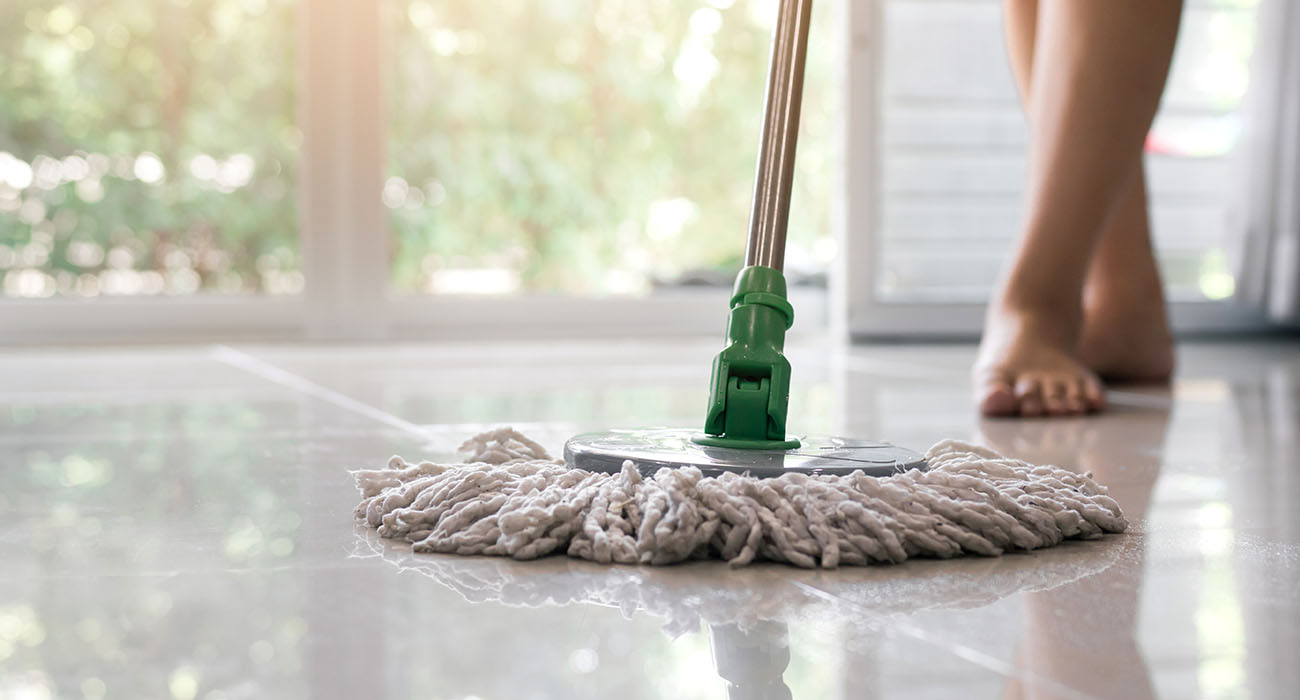
Final cleaning
After completion of the laying work, the covering surface must be cleaned of construction dirt. This task is usually performed by the tiler using special cleaning agents.
Basic cleaning*
Basic cleaning may be necessary to remove heavy wear residues after a few years, despite regular maintenance cleaning. For this purpose, a cleaning machine and an intensive cleaner can be applied.
Maintenance cleaning**
Regular maintenance cleaning is carried out by damp cleaning with a suitable wiping additive, sweeping or vacuuming. The use of cleaners containing soap is not recommended. The resulting deposits can permanently impair the appearance of the tile.
Princess Ceramic recommends the ecological, surfactant and preservative-free cleaners:
*NEOCLEAN Intense - intensive and basic cleaner
**NEOCLEAN Care - wiping care
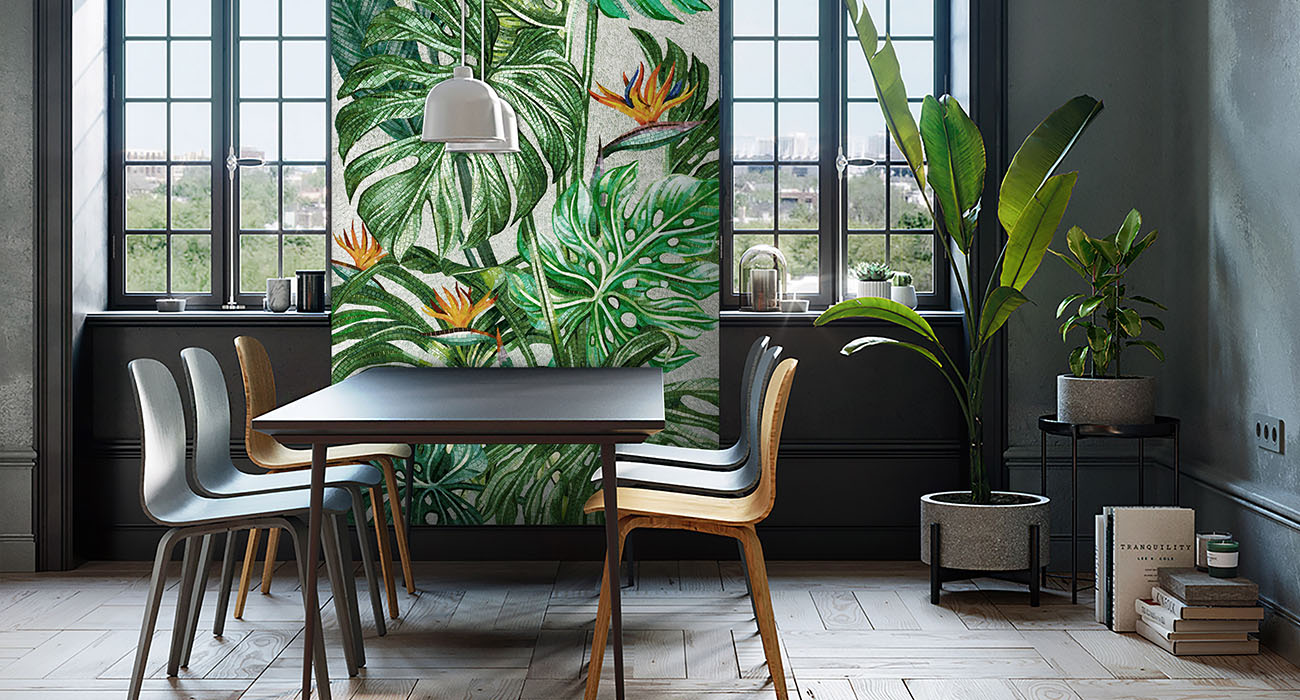
Mosaic
Mosaics are tile formats with a size of up to 10x10 cm. These are usually glued to so-called panels with a size of 30x30 cm on a fabric net at the factory to facilitate installation. Mosaics can be made of a wide variety of materials, such as ceramic, glass or natural stone. You can find even more mosaics in the Princess Ceramic Mosaic catalogue
Decorative tile
Decors are applied to blank tiles in a tile series. They can be applied as a single decor or can be made up of different decor tiles that together form a picture. As a design element, they can be used on walls and floors in all rooms, depending on the material.
Surfaces
The finish of tile surfaces can vary. Matt surfaces are considered to be more dirt-resistant and reproduce colours and structures very authentically or naturally according to the chosen look. Polished floor tiles and glossy wall tiles create an optical depth through the reflection in the surface and make rooms appear larger. Due to the irregular surface finish, the partially or fully polished tiles offer a versatile appearance that is particularly suitable for highlighting structures. In addition, the partially or fully polished surface offers a good compromise between the advantages of a polished or glossy surface and the aspect of slip resistance.
Fire colours
The production of tiles is a highly complex process. The smallest differences in the aggregates or changes in air pressure cause minimal deviations in the colours of the finished fired tiles. For this reason, the firing colour or colour nuance is always indicated on the tile board. In principle, we recommend calculating the order quantity so that sufficient material is available for possible repairs. In case of a repeat order, the fire colour should also be indicated. However, we cannot guarantee the subsequent delivery of a specific shade.
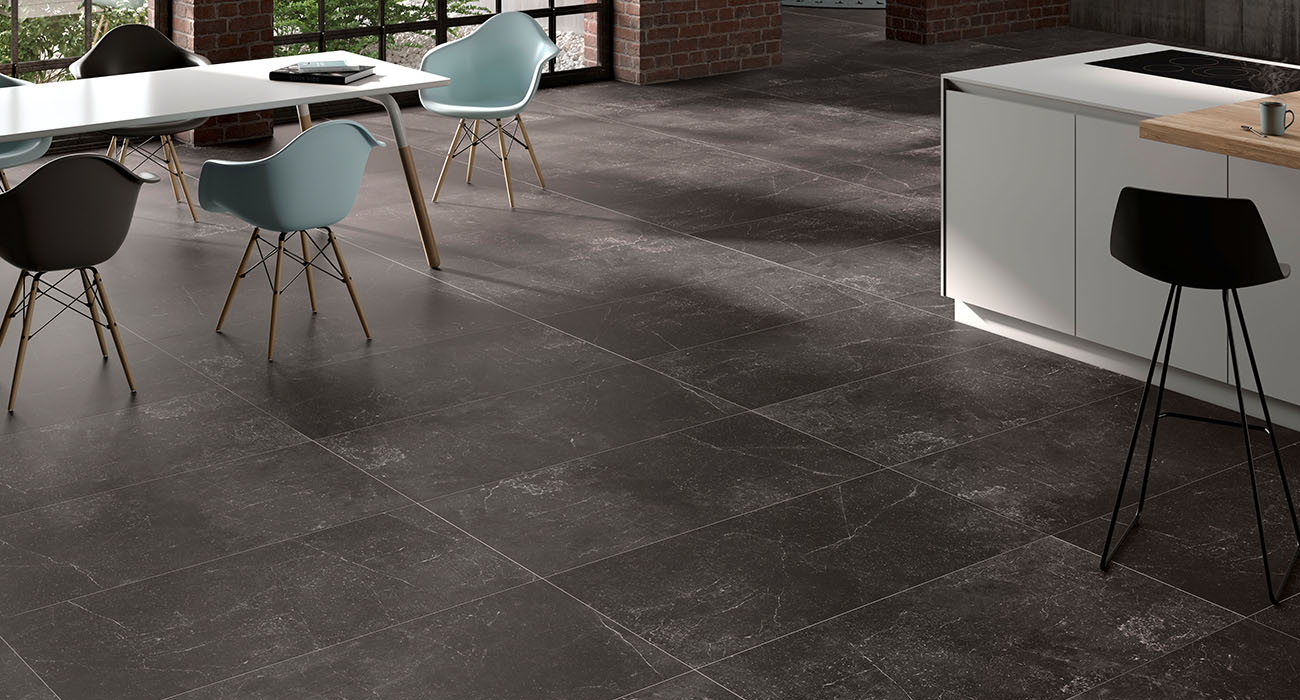
Colouring/ Variation
Many tile series are produced with a special variety in appearance, so that an authentic overall appearance is created, the so-called variance. The aim of this variety is to reproduce the replicated looks such as stone, concrete or wood as naturally as possible on the tile. After all, even in nature, no two stones are alike and even concrete floors are always shaded and worn differently. This variation is indicated by means of the V-value in four defined categories:
V1: little variation
The tiles have hardly any noticeable differences. The appearance appears particularly calm. Colours and structures remain almost the same from tile to tile.
V2: medium variation
Slight differences between the tiles are noticeable here. Overall, there is still a calm, natural overall appearance.
V3: high variation
With tiles in a high variation, the differences between the tiles become relatively clear. The appearance appears lively and varied.
V4: extensive variation
Here, variation is used as a deliberate stylistic device. The tiles differ strongly in colour and/or structure and develop an intense overall image.
The differences in the variation of the tiles always mean that the tiles do not have completely different colors, but in terms of their color they hardly differ in shades and / or structure. The indication of the V value is an important statement with regard to the overall tile effect and is helpful in further selecting furniture and the rest of the interior.
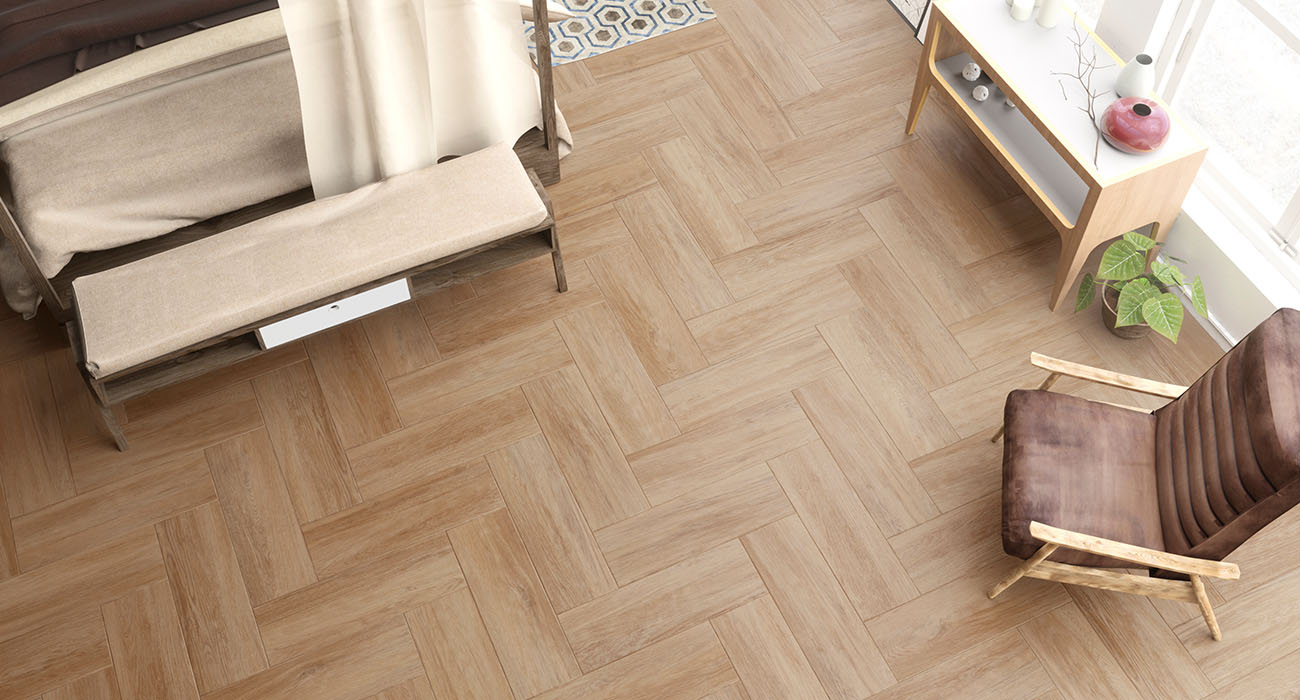
Tile sizes
The smallest Princess Ceramic tiles are 7.5 x 15 cm, the largest 260 x 120 cm. Only the mosaic is even smaller. The selection of the appropriate size of tiles can be made according to your own design wishes. They are only limited by the swinging base and the mounting height, e.g. by laying tiles on a tile. The use of different formats on one level of the installation creates accents and gives the room a dynamic character. It is important to take into account the appropriate thickness of the tiles, as well as a clear reference to the suitability of the respective series when laying in a modular system. Choosing a tile format can also help to make the chosen look of the tile look even more natural, including for the appearance of wood. You can find even more tiles in the Princess Ceramic Living catalogue.
Tile concepts and installation patterns
As a durable and hard-wearing product, tiles are ideal for all rooms and living situations. Thanks to these properties, it is also possible to furnish an open-plan living concept with the same tile range. The flowing transitions between the individual rooms harmonise the room as a whole, making it appear even more spacious. A concept with different tile series in the individual rooms, on the other hand, creates particularly homely accents and makes it possible to use a mix of styles as an individual design element. By using a special laying pattern, the selected tiles can be additionally emphasised. For wood tiles in particular, the tried-and-tested herringbone, coffered, wild, English or parallel patterns used for real wood and parquet flooring are ideal. Patterns can also be used for metro tiles in addition to the standard horizontal half bond. Parallel bond and herringbone as well as a change in the laying direction (vertical) can create an unusual look and set highlights.
Optics
Find your favorite styles for ceramic floor and wall design with the help of our presentation of the series according to styles.
#concrete #stone #wood #industrial #retro
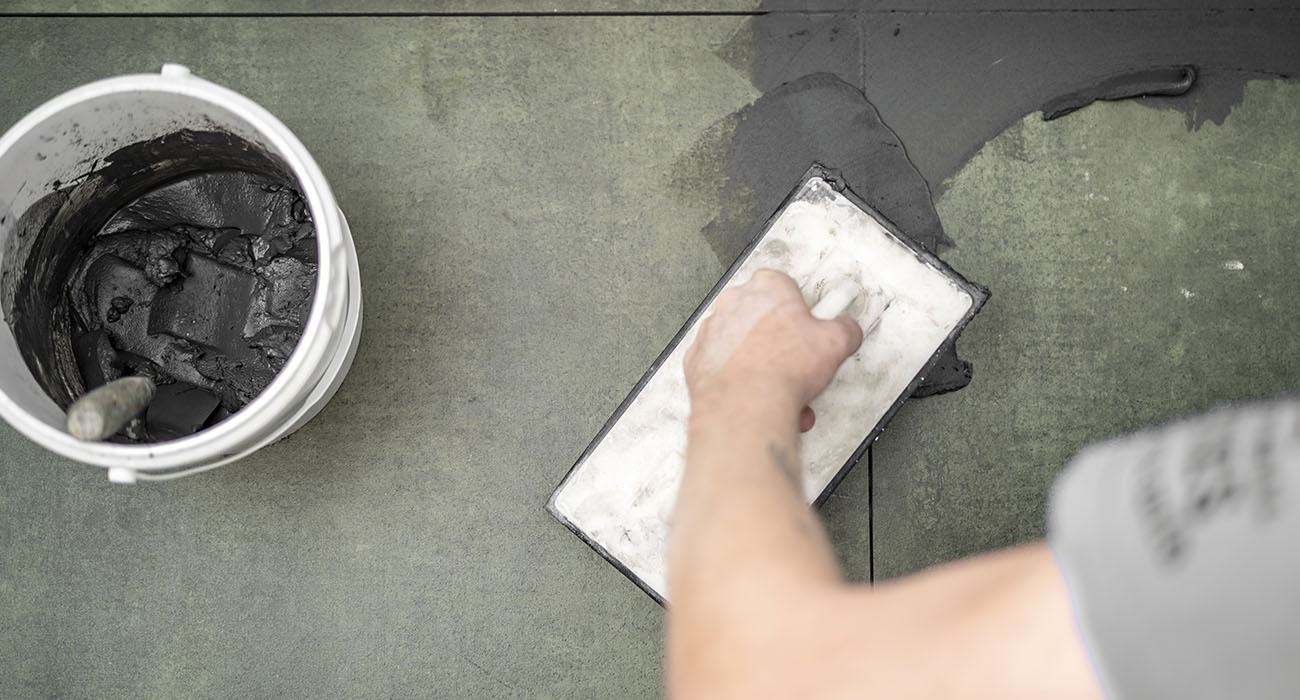
Jointing
After laying the tiles, the spaces between the tiles are filled with a joint compound. This step is not only practical and technically necessary, but also fulfils a design function. A wide range of colors is available so that the grout can be matched to the tile colours or used as a contrast, e.g. for metro tiles. The grouts are available on a cementitious basis or as an epoxy resin variant. Differences are found with regard to resistance, especially to cleaning agents
Tile edging profiles
Profiles and rails provide a neat finish to the covering or a visually appealing connection between the tiles, e.g. on pre-wall elements and storage compartments. Here, too, the design variety is taken into account with a wide range of materials, shapes and surface finishes; even variants with integrated lighting are available from specialist dealers. Alternatively, the tiles can be mitred so that no profiles have to be used.
Underfloor heating/wall heating
One advantage of laying tiles is the possible use of conventional or electric underfloor heating. Ceramic has a high thermal conductivity factor, so rooms can be heated more energy-efficiently than with conventional radiators. Modern electric heaters allow the wall tiles to be heated even in the shower area, which is particularly advantageous for exterior walls.
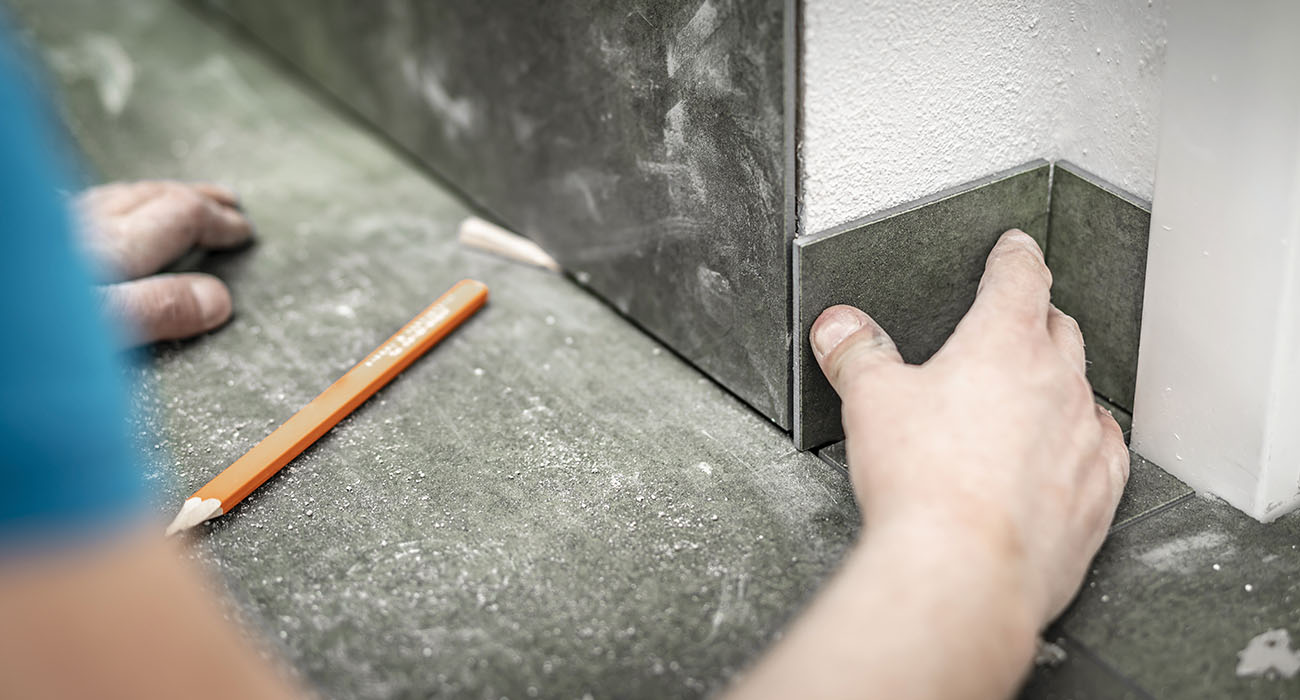
Bathroom design
Prefabricated construction elements make it possible to install tileable seating areas, shower walls, room dividers and storage areas (niches). These can also be fitted with heaters and/or light strips and offer not only a high level of user comfort but also various design options.
Plinth
A ceramic plinth from a selected series of tiles creates a stylish transition between the floor covering and the wall. The plinth, apart from the visual aspect, is also used to protect the wall from dirt, e.g. when cleaning the floor. Princess Ceramic plinths are always fitted with a chamfered edge, i.e. a slightly chamfered upper longitudinal edge. This gives the plinth a well-formed look and connects the wall to the floor in an even more visually appealing way.
Cut to size
Ceramic tiles are easy to work with and can be cut into any shape. Grooved steps, mosaics in desired sizes and shapes as well as plinths can be made to measure. Specialist dealers will be happy to advise you on this and can arrange appropriate quotations.